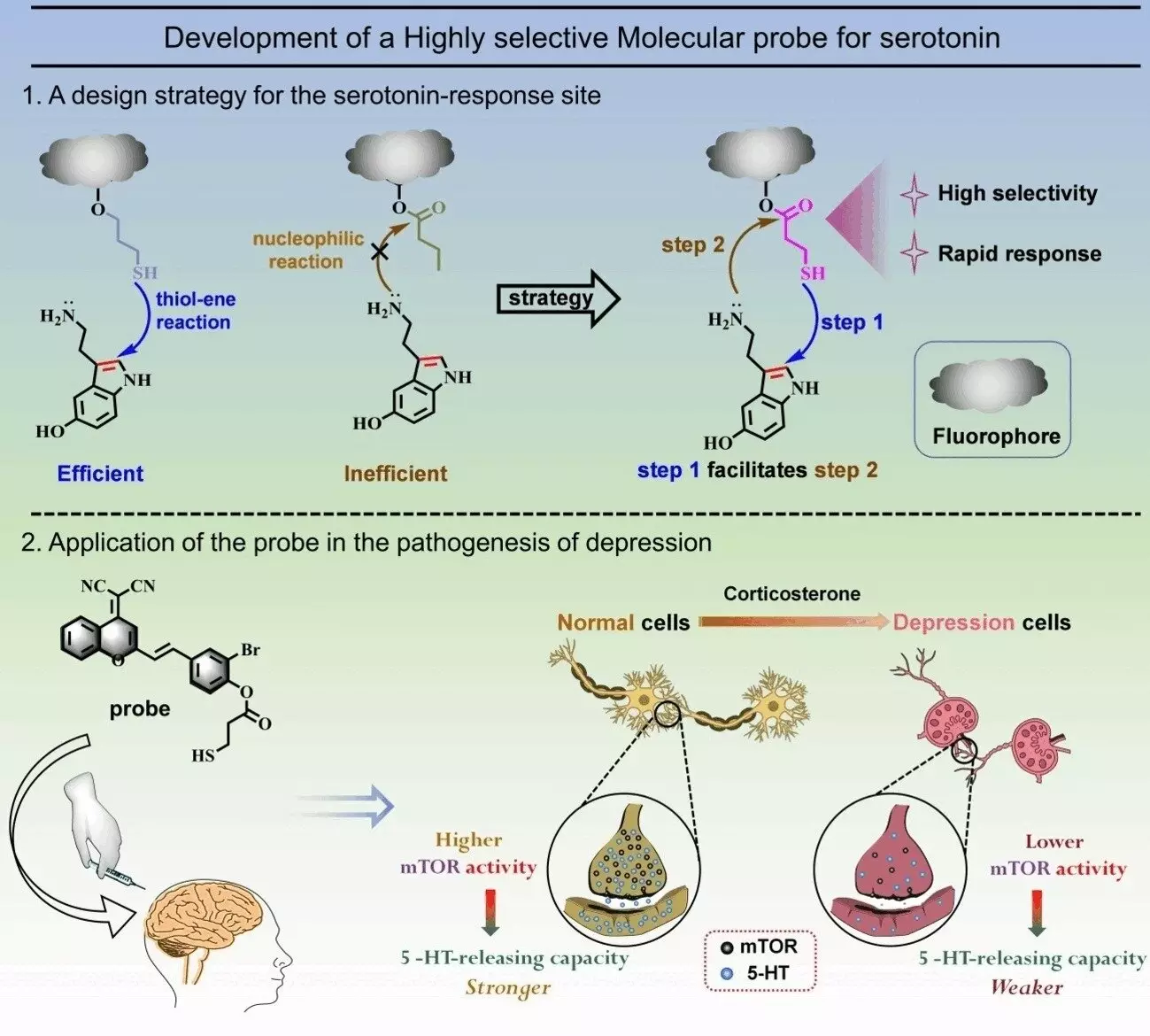Depression is a prevalent mental health issue worldwide, with current treatments often proving to be insufficient due to the complexity of its mechanisms. One of the most debated aspects of depression is the correlation between serotonin levels and the development of the condition. A recent study conducted by a team of researchers at Guangxi University in China has shed some light on this topic by developing a novel fluorescent probe that can detect and image serotonin in a highly sensitive and selective manner.
The researchers faced the challenge of designing a fluorescent probe that could specifically target serotonin, despite its structural similarities to other biomolecules like melatonin and tryptophan. By incorporating a unique reactive group (3-mercaptopropionate) into a fluorescent dye, the team was able to create a probe that remains inactive until it encounters serotonin. This reactive group undergoes a cascade reaction with serotonin, ultimately leading to the removal of the building block from the dye and activating its fluorescence.
Using this newly developed probe, the researchers were able to visualize serotonin levels in neuron cell lines both in normal and “depressed” states. Surprisingly, the serotonin levels in both types of cells were found to be relatively similar. However, further analysis revealed that the cells in a “depressed” state had a reduced ability to release serotonin in response to stimulation. This finding suggests that the ability of neurons to release serotonin, rather than the overall serotonin levels, may play a more critical role in depression.
The study also explored the potential role of mTOR, a biomolecule involved in various cellular signaling pathways, in regulating serotonin release. The researchers observed that activating mTOR in “depressed” cells significantly increased serotonin release, while inhibiting mTOR in normal cells resulted in a decrease in serotonin release. These findings suggest that targeting mTOR activity could be a promising avenue for developing more effective treatments for depression that focus on enhancing serotonin release mechanisms rather than simply increasing serotonin levels.
The study highlights the importance of understanding the intricate relationship between serotonin levels, serotonin release mechanisms, and depression. By developing a specialized fluorescent probe and utilizing advanced imaging techniques, the researchers have made significant advancements in unraveling the complexities of depression. Moving forward, further research into the role of mTOR and other regulatory biomolecules in serotonin release could pave the way for innovative approaches to treating depression and improving patient outcomes.


Leave a Reply